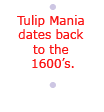The History and Living Tradition of Edible Flowers |
|
|
By Claire Holt For many people, adding edible flowers to our meals is something that’s new, exciting, and definitely out of the ordinary. After all, flowers aren’t food - not really, not like tomatoes or carrots. (Ignoring, of course, that broccoli and cauliflower are both flowers!) It could be easy to even think of it as a fad, a passing fancy for people bored by their everyday diets. Yet the history of edible flowers has carried on in an unbroken line for thousands of years; their first recorded mention was in 140 B.C., and even today rosewater and orange flower water are used daily in many Middle Eastern and south Asian homes. Everywhere you look, flowers begin to come into view: saffron from crocuses, lavender in Herbes de Provence, steamed banana leaf rolls, and even the humble hops which are so crucial to beer. This reflects an ancient history, one we can become part of simply by sitting down to dinner. Not So Ancient History If you add calendula - a variety of marigold - to your salad, you’re part of a living tradition stretching back to the ancient Greeks and Romans. In nearly every ancient culture across the world, there are records of flowers being used in salads and added as flavourful herbs. Their use was particularly pronounced during the age of the Romans; dandelions were mentioned as one of the bitter herbs in the Bible, and the Romans themselves feasted on meals containing flowers such as mallow, violets, and roses. South American civilizations - such as the Aztecs and Mayans - also used flowers in both their cooking and religious rituals, which was a common practice among many cultures. Because the Roman empire stretched across so much of Europe, this tradition continued into the “Dark Ages” and medieval era of English history. Monks renamed calendula the “pot marigold” due to its common use in their soup pots, capers (the flower buds of the capparis shrub) spread to England via Italy, and the Chinese use of chrysanthemums in their meals was brought over in the 17th century. Edible flowers were particularly in vogue during the Victorian era, as the Victorians developed a complex “language of flowers” and were enamored by the sheer romance of flower-encrusted sweets, pastries, and salads. Candied flowers were particularly popular, as the process helped to preserve the delicate blooms as well as adding texture and sweetness. Why Flowers? In many ways, we are also returning to this thread of history by focusing on organic, home-grown and local produce. The moment when organic foods were seen as pretentious or “hippie” has passed, after all; it was simply a small blip on history’s radar, and prices are dropping sharply as more people begin to eat organically. “The more people that continue to switch, the more prices will lower and the better it will be for both farmers and consumers to manage a more sustainable and healthy way of life,” according to Licensed Prescriptions. Edible flowers only fell out of fashion within the 20th century, which can easily be traced to the sudden production and sale of food on an industrial scale. Flowers, delicate as they are, should be eaten the day they are picked and shouldn’t be treated with any chemicals - two traits which make them anathema to commercial production. Our culture now places cultivated plants into strict “edible” and “decorative” categories, but this wasn’t always true. Instead, they were seen as edible or inedible, with the additional category of medicinal in the days before modern medicine. Some flowers, like calendula and rose, were seen as fit for the wealthiest member of ancient civilisations. For the lower classes, flowers were an inexpensive - or free - way of adding flavour and colour to their often bland meals. In England, elderflowers (which often grow wild in hedgerows) have been used for centuries in sweets, drinks, and other foods. American colonists relied on flowers for the same reasons, brightening their difficult lives with everything from candied roses to dandelion jelly and wine. For all of their history, edible flowers have been a bright spot on the culinary landscape, available to everyone from peasants to kings. Reclaiming this tradition takes nothing more than a pot or patch of land, some care and attention, and a desire to bring beauty and flavour into your life and your kitchen. |
|
|
|


